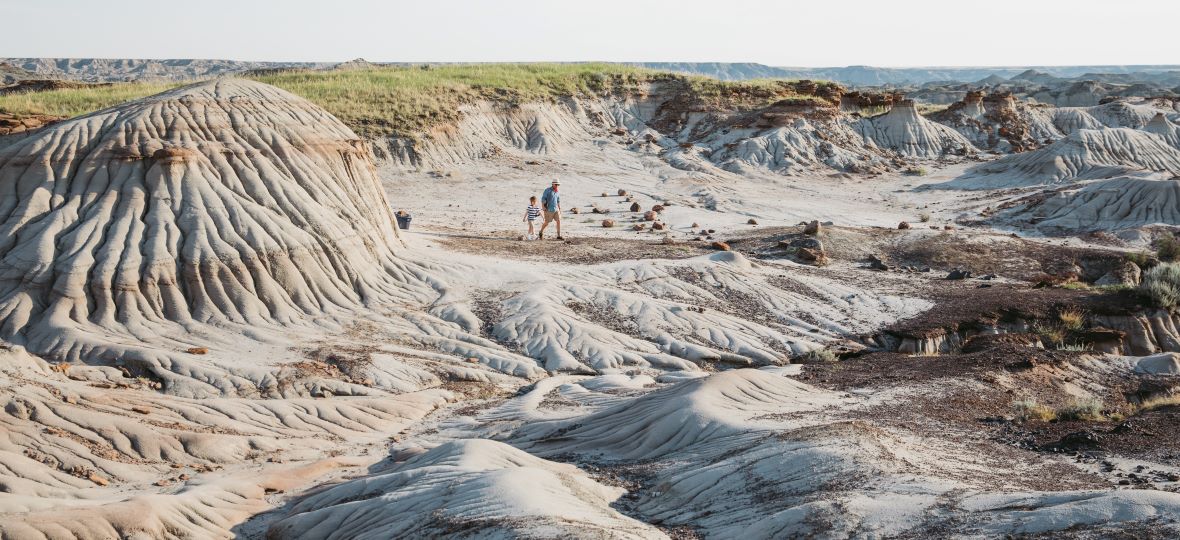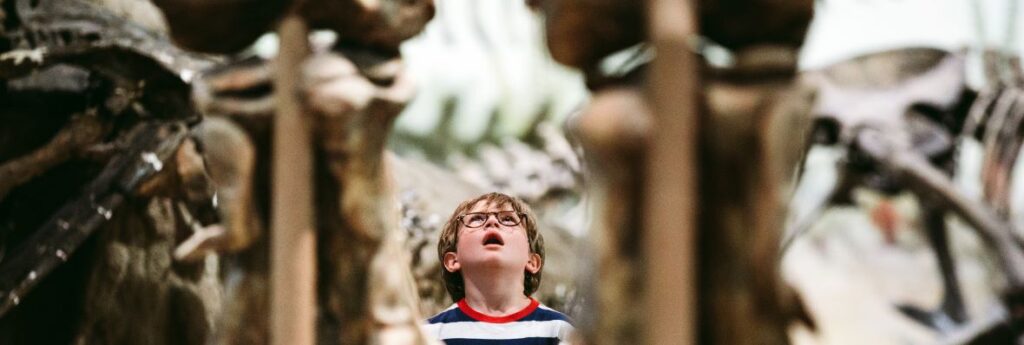With road trips and domestic travel likely to be all the rage for Canadians this summer, there’s perhaps no better time to bone up on some local dinosaur lore than Alberta’s famous “badlands.”
Home to the where dinosaurs roamed over 65 million years ago, the province hit the headlines earlier this year when palaeontologists discovered a new species of tyrannosaur – thanatotheristes degrootorum – which is one of the oldest tyrannosaur species ever discovered in North America. At roughly 79.5 million years old, the species is 2.5 million years older than its closest relative and is directly linked to the notorious Tyrannosaurus rex.
“Alberta has a rich dinosaur history, and we have uncovered some of the biggest finds on Earth here in the province,” said Dr. François Therrien, Curator of Dinosaur Palaeoecology at the Royal Tyrrell Museum.
Fortunately, one doesn’t have to be a paleontologist to uncover Alberta’s prehistoric past. Visitors can follow the Fossil Trail, a diagonal path that stretches 2,500 km from Pipestone Creek near Grande Prairie, southeast to Devil’s Coulee near Warner, encompassing the richest bonebeds and greatest diversity of fossils in the world.
But be warned: There are so many dinosaur fossils in some parts of Alberta there’s a rule against pocketing them from the ground.
Here are four highlights to discover:
The Royal Tyrrell
A world leader in the study of ancient life, the Royal Tyrrell Museum of Paleontology provides a great starting point for understanding how the dinosaurs lived and why they became extinct. It’s easy to spend an entire day there exploring the various exhibits and watching students working on specimens in the labs. The museum is located near Drumheller, approximately 1.5 hours northeast of Calgary, and houses one of the world’s largest displays of dinosaurs.

Dinosaur Provincial Park
Although dinosaurs roamed all over Alberta, Dinosaur Provincial Park, a UNESCO World Heritage Site in the badlands of southeastern Alberta (about 220 km from Calgary), is the epicentre of fossil finds. The park offers one-, two- and three-day guided excavation programs in which participants take part in real dinosaur digs that contribute to ongoing scientific research at the Royal Tyrrell Museum.
Pipestone Creek Bonebed
In northwest Alberta, one of the world’s top five richest bonebeds is located just south of Grande Prairie. On a bluff above Pipestone Creek lies a massive gravesite of pachyrhinosaurs – horned, plant-eating dinosaurs that lived 73 million years ago.
The nearby Philip J. Currie Museum, named after Canada’s leading palaeontologist and co-founder of the Royal Tyrrell, features public galleries, research and collection facilities and educational programming. Dino hounds can take part in the full-day Field Experience during the summer with activities including learning how to make a cast in the Paleo Lab, touring the bonebeds and then taking part in related activities once the casts have set.
Devil’s Coulee
Everyone loves baby animals, so imagine the fuss when the fossilized remains of dinosaur babies and their eggs were discovered at Devil’s Coulee in southern Alberta in 1987. Two-hour site tours take budding palaeontologists onto windswept bluffs and up and down coulees to the original nesting site. While searching for fossils, guides explain the importance of the find: the discovery proved for the first time that groups of these creatures came together to nest and raise their young, revealing a social rather than solitary nature.

